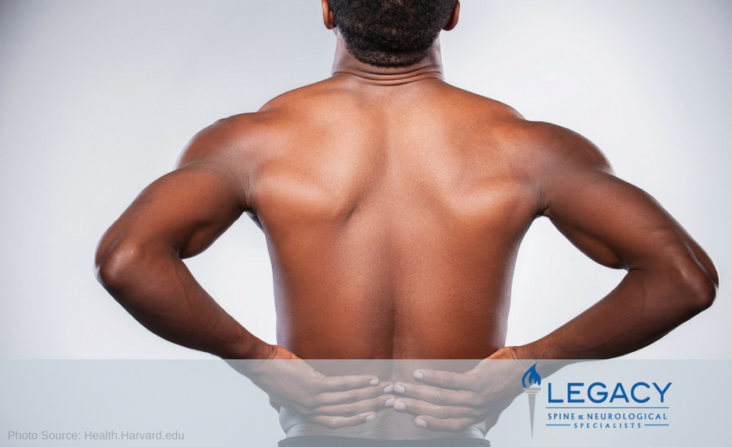A new year is a time of new beginnings and it is never too late to improve your habits when it comes to proper posture. Fostering good posture habits will pay dividends for years to come.

A new year is a time of new beginnings and it is never too late to improve your habits when it comes to proper posture. Fostering good posture habits will pay dividends for years to come.
Retrospective Review of an MIS Lumbar Fusion Technique in Outpatient and Hospital Settings
Scott Schlesinger, M.D. (Legacy Neurosurgery and Spine, Little Rock, AR)
Introduction: Advances in MIS surgery have helped expand the number of procedures that may be performed safely on an outpatient basis. Patients may benefit from decreased tissue disruption that potentially minimizes pain, blood loss, complications, hospital stay, and recovery time. Our clinic has combined MIS techniques with image guided navigation to develop a lumbar fusion procedure that can be performed through a single midline incision with cortical screw trajectory, achieving direct decompression, fusion, and instrumentation, permitting patients with low comorbidities to be treated on an outpatient basis. Here we compare surgical results from outpatient and hospital settings.
Methods: Under IRB approval, a retrospective chart review of a consecutive series of adults with lumbar stenosis and instability, treated over an 11-month period by one surgeon, was performed. Charts were reviewed for demographics, diagnosis, medical history, surgical parameters, and complications.
Results: A total of 73 patients with degenerative disease positive for radicular pain and segmental instability were reviewed (Table 1). Outpatients (n=40) were single level procedures, while hospital patients (n=33) were treated at one (n=28) or two levels (n=5). Average OR time was 204±51 minutes for outpatients and 221±61 for hospital patients (Table 2). Average estimated blood loss was 345cc±198 for outpatients and 298cc±217 for hospital patients. All surgical incisions were <2cm and no blood transfusions were required. All outpatients were successfully discharged on the same day. Average stay for hospital patients was 2.5±2.6 days. There were no unanticipated complications or trends observed.
Conclusion: Surgical outcomes in this series demonstrate the initial benefits of the midline technique in outpatient or hospital settings. Navigation, cortical bone trajectory, and keyhole incision allows direct decompression and instrumentation, optimizing MIS in the lumbar spine. Long-term, prospective clinical studies may further demonstrate the safety and long-term efficacy of this technique.
Table 1. Patient Demographics
| Outpatient (n=40) | Hospital
(n=33) |
Total
(n=73) |
|
| Age | 52.1 ± 8.6 | 62.4 ± 17.0 | 56.8 ± 14.0 |
| Sex | 24 Males
16 Females |
15 Males
18 Females |
39 Males
34 Females |
| Prior Surgery (any lumbar level) | 15 Yes (38%)
25 No |
15 Yes (45%)
18 No |
30 Yes (41%)
43 No |
| Levels Treated | All single levels | 28 single level
5 two-level |
68 single level
5 two-level |
Table 2. Surgical Parameters and Intra-Operative Complications
| Outpatient (n=40) | Hospital (n=33) | Total (n=73) | |
| Surgical Parameters | |||
| · OR Time (Minutes) | 204 ± 51 | 221 ± 61 | 212 ± 56 |
| · Est. Blood Loss (CC) | 345 ± 198 | 298 ± 217 | 324 ± 206 |
| · Hospital Stay (days) | Same Day | 2.5 ± 2.6 | 1.1 ± 2.1 |
| Intra-Op Complications (n) | |||
| · Intra-Op Durotomy | 2 | 3 | 5 |
| · Dural Fistula | 1 | 0 | 1 |
| · Cardiac Issue | 0 | 1 | 1 |
| · Urinary Stasis | 1 | 1 | 2 |
| · Psuedomemingocele Repair
(From prior fusion surgery) |
0 | 1 | 1 |
Submitted to the 2017 Annual Meeting of the Congress of Neurological Surgeons, to be held October 7-11, 2017 (Boston, MA)

Many of us will make resolutions of all types for 2017. We would like you to make some resolutions for the health of your back and neck. Here are some tips that you can adopt to improve your spine health in the coming year.

You hear about the typical reasons for back pain all the time; a slipped disc, a work injury, a genetic disorder. But you may not know all the things you do on a daily basis that indicate you’re headed towards a whole heap of pain. Back pain often isn’t an instantaneous thing. It usually occurs as a culmination of things that have happened to your body over the years. So, we’ve put together the top five bad habits that you might not even know are contributing to your pain or might contribute to pain in the future.

Whether young or old, male or female, chances are you’ll experience back pain at some point in your life. Whether you drink hot tea or sweet iced tea, whether you’re a world traveler or homebody, chances are an injury, poor posture, or aging will affect the way you sympathize with chronic back pain sufferers. We have the expertise, staff, and passion for treating back pain for every walk of life, but there are things our patients can do at home – like yoga – to help prevent or help alleviate inflammation.

Migraines always seem to strike at inopportune times. And with the countless holiday parties, gatherings and trips that will be going on in the next month, the number of events that could be effectively ruined by an ill-timed migraine are about to greatly increase. Unfortunately, along with the number of events that could be ruined by migraines, the amount of migraine triggers is also about to go up. Indulgent food, bright décor and unusual schedules can all heighten the chance of migraines, yet avoiding these throughout the next month seems near impossible. By following the below guidelines, you can increase your chances of enjoying your typical holiday merriment while also keeping headaches and migraines in check.

Holiday season is officially here, and for many central Arkansans, that means lots of travel hours spent in the car and airport to see far away friends and family. Grueling holiday travel can be taxing on the healthiest people, but for those with chronic back pain, it can be almost unbearable. Below, we’ve outlined a few basic practices to help you have a happy, pain-free holiday.

As in the case with most of us, it’s easy to get caught up in the daily routine of life. A pop-tart on the way to work. Lunch at your desk. Picking up kids at soccer practice. Attempting to clean the house before it gets destroyed again by the new puppy. Rarely, do we all have a moment to sit, breathe, and take in this amazing life we are so honored to live.
When you are suffering from back pain, it gets even harder to shift that focus to thankfulness. So, we are taking this time to allow our amazing Legacy staff to remind us about the important things in life that keep them thankful all year long.

It’s not new news necessarily, but even more research has come out to back it up. Smoking is directly linked to your back pain. Scientists from Northwestern University in Evanston, Illinois released information through a study that suggested that smoking directly interferes with a circuit in two different regions of your brain that is associated with pain.

Holiday season is quickly approaching and some of our patients are booking their flights to go home to see family they don’t get to see any other part of the year. We love to see their excitement. But hate to see the anxiety that ultimately sets in when they think of the low back pain they experience when sitting for a long period of time.
By the very nature of the word “vacation”, a person should experience the act of vacating their normal routine; including dealing with chronic back pain. So we’ve put together an action list for those flying to family and friends this season to help them prevent back pain on plane rides.